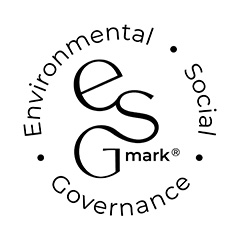Following the introduction of the tax-free savings and dividend allowances from 6 April 2016, many investors were able to receive interest and dividends without incurring a tax charge on the income.
However, the Chancellor Jeremy Hunt announced in the Autumn Statement that the dividend allowance will be reduced from £2,000 to £1,000 for the 2023/24 tax year, with a further reduction to £500 for the 2024/25 tax year.
For the basic rate taxpayer, this will mean an increase in their tax liability of £87.50 for the 2023/24 tax year. Similarly, higher and additional rate taxpayers will see their tax liabilities increase by £337.50 and £393.50 respectively.
A similar reduction to the annual exempt amount for Capital Gains Tax was also announced at the Autumn Statement, with the tax-free amount which individuals can realise capital gains set to reduce to £6,000 from April 2023 and £3,000 from April 2024.
As we approach the impending reduction of the tax free rates in April, now is the time to consider whether action can be taken to improve the tax efficiency of your investments.
ISA allowance
ISAs can provide a tax-free wrapper for your savings and investments, which means the income and gains arising within an ISA are free of both income tax and capital gains tax. It is possible to invest up to £20,000 in an ISA for the 2022/23 year, in any combination of cash or stocks and shares. Unused ISA allowances cannot be carried forward, so to fully utilise the allowance the investment must be made before 5 April 2023.
Pensions
Pension funds are a tax efficient method of saving for retirement, as income and capital gains generated by the fund are tax free.
Personal pension contributions made within your £40,000 annual allowance will attract basic rate tax relief at source, which your pension provider will be able to claim back from HMRC. When taking into account the basic rate tax relief, a contribution of only £32,000 needs to be made by you personally to gain the maximum relief.
Unused annual allowance for the three previous years can be carried forward to increase the maximum amount you can contribute for the year. This means any unused allowances for 2019/20 must be utilised before 5 April 2023.
If you are a higher or additional rate taxpayer, higher and additional rate tax relief on pension contributions can be claimed via your tax return.
It is important to note that the £40,000 annual allowance may be reduced for individuals whose income is more than £200,000. Professional advice specific to your circumstances should be sought before making significant pension contributions.
Investment in Venture Capital Trust, Enterprise Investment Scheme and Seed Enterprise Investment Scheme
Dividends received from investment in Venture Capital Trust (VCT) shares are exempt from income tax and do not need to be reported on your self-assessment tax return.
Your income tax liability can also be reduced by up to 30% of the amount invested in VCT and Enterprise Investment Scheme (EIS) qualifying companies. There is a 50% income tax relief on the amount invested in Seed Enterprise Investment Scheme (SEIS) investments.
There is a maximum amount which can be invested each year of £1m for EIS (this can be extended to £2m if at least £1m is invested in knowledge intensive companies), £200,000 for VCT investments and £100,000 for SEIS.
The amount of income tax relief which can be claimed is limited to your income tax liability for the year, although for EIS and SEIS there is an option to carry back investments one year if the income tax relief for the current year was not fully utilised.
There are also Capital Gains Tax reliefs available on EIS and SEIS investments. Capital gains on the disposal of other assets such as land and property can be deferred by re-investing the gain into qualifying EIS shares, provided the reinvestment is made within the period starting one year before and ending three years after the date of disposal of the other asset. Capital gains which are realised on EIS shares will also not be subject to Capital Gains Tax if the qualifying shares have been held for three years.
Capital Gains Tax relief is also available for SEIS, which allows for 50% of gains on other assets in the year to be exempted from Capital Gains Tax provided the gain is reinvested within the same year.
It is important to remember that EIS, SEIS and VCT schemes are designed to encourage investment in smaller companies and are often seen as higher risk investments.
This is intended as a summary and overview of the tax reliefs available and does not constitute investment advice. No action should be taken without first seeking professional advice specific to your circumstances.
If you have any questions about the above, or would like more information specific to your circumstances, please enter your email address below and we will get in touch:













